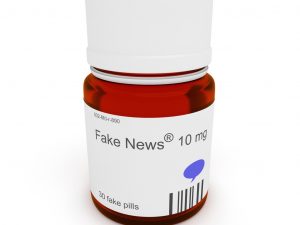Content Spotlight
Podcast: MilliporeSigma says education vital to creating unbreakable chain for sustainability
MilliporeSigma discusses the importance of people, education, and the benefits of embracing discomfort to bolster sustainability efforts.

Industry consortium the International Society for Cell & Gene Therapy (ISCT) has warned of the dangers of unproven therapies as unscrupulous players look to take advantage of COVID-19 uncertainties.
The 1918 Spanish flu outbreak saw the advocation of a host of unproven remedies by the media and advertising firms. These included tobacco, heroin, cocaine, laxatives, malted milk, and literal snake oil.
Over a hundred years on with the world caught up in another pandemic, quack remedies and snake oil are once again being touted as effective against the novel coronavirus (COVID-19), including untested stem cell-based therapies, according to industry group.

Image: iStock/cbies
“We are increasingly seeing examples of unproven cell and gene therapies, especially perinatal-tissue derived products, marketed as safe and effective treatments for COVID-19 without adequate clinical evidence to support such claims,” Laertis Ikonomou, co-chair of the ISCT PTF on the use of unproven and/or unethical cell and gene therapy, told Bioprocess Insider.
He added that “sensationalist and irresponsible reporting by some lay press reinforces and propagates such unfounded claims.”
The ISCT has long been fighting against unproven cell and gene products and services from rogue actors looking to profit from ill-informed and sometimes desperate patients. According to the group, the unproven cell therapy market is worth $2.4 billion and involves approximately 60,000 patients annually, paying up to $40,000 per treatment. The fear and uncertainty arising from COVID-19 has created another opportunity for charlatans to take advantage of.
Bruce Levine, president-elect of the ISCT, added that while the consortium is yet to see any public reports of patients who have actually received these interventions, or of investments in these purported therapies, the impact of false reporting has already endangered the public. Specifically, an Arizonan couple poisoned themselves after ingesting a fish tank cleaning additive made with the same active ingredient as the anti-malarial drug chloroquine. Chloroquine had been jumped upon by media outlets and US President Trump as a prevention to COVID-19 despite scant evidence.
But despite the presence of misinformation and rogue players, cell and gene therapies could play their part in the battle against COVID-19.
“There are reports of the potential use of cell therapies to counter inflammation or Acute Respiratory Distress Syndrome,” said Levine. Athersysy has an allogeneic marrow-derived cellular drug thought to reduce inflammation in the clinic, while Mesoblast is exploring whether its mesenchymal stem cell (MSC) product Remestemcel-L can be adapted to be an immune-modulatory agent. However, whether these will be effective against COVID-19 is as yet unknown.
“A significant point to make is that in the current pandemic stage with tens of thousands of new case each day, deploying cell therapies to manage severe complications of COVID-19 is not practical,” said Levine. “When we get to a point of endemic low frequency disease and seeing the data from controlled clinical trials will be the time to revisit.”
You May Also Like